Making sense of Easter 1916
Published in 20th-century / Contemporary History, Features, Issue 2 (Mar/Apr 2006), Revolutionary Period 1912-23, Volume 14, World War I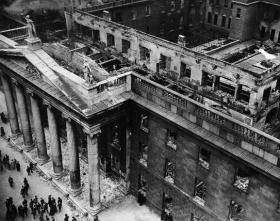
A view of the ruins of the GPO from Nelson’s Pillar. (National Museum of Ireland)
Shortly after the outbreak of the First World War, a group of Irish separatists took the decision to launch a rebellion before the war ended, and early in 1915 an unofficial military committee of the Irish Republican Brotherhood began to draw up plans. The military forces to be used were the Irish Volunteers, but the planners’ ideas were not accepted by some of the senior Volunteer leaders. The key belief of those who aimed at insurrection was the Fenian dogma that ‘England’s difficulty is Ireland’s opportunity’. In other words, the British state (actually the United Kingdom, though Irish separatists always called it England) would be weaker when it was engaged in a major war than it was in peacetime. Republican separatists believed that they had both a duty and a right to strike on behalf of the Irish people, because Ireland was at a critical point in its history. Its sense of nationality, they thought, was threatened as never before by the encroachment of British power and values (a process usually called ‘Anglicisation’). Patrick Pearse expressed most vividly and fiercely the fear of what may be called ‘cultural genocide’. But there is no doubt that it was shared by a wide group of so-called ‘Irish-Irelanders’. With their powerful sense of history, they responded to Pearse’s argument that every generation had to take up the torch of revolt in succession to such secular saints as his hero Robert Emmet. (Pearse actually used the phrase ‘apostolic succession’ in his description of nationality.)
Secret planning
Some of the leading planners of the rising, notably Patrick Pearse himself, Joseph Plunkett and Eamon Ceannt, were senior members of the Irish Volunteer executive—in effect the organisation’s general staff. But the chief-of-staff, Eoin MacNeill, and the most influential man on the executive, Bulmer Hobson, strongly argued that the Volunteers should wait. In their view, the existence of an armed citizen militia (i.e. the Volunteers; none of them paid much attention to the socialist Irish Citizen Army at this stage) put Irish nationalists in a stronger position than they had been in for generations. Far from being weakened by fighting a war, the British state was at its strongest, with emergency powers (the Defence of the Realm Acts) and a mass army.
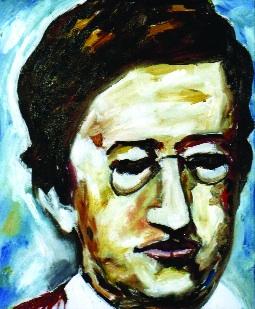
Joseph Mary Plunkett—the famous ‘Castle document’ released on the Wednesday of Holy Week 1916 was not a forgery, but it was ‘sexed up’ by Plunkett to make British plans to disarm the Volunteers appear imminent. (Caoimhghín Ó Croidheain)
But it had a crucial weakness, which would grow as the war lengthened: its need for manpower would inevitably lead to the imposition of compulsory military service. Conscription was disliked in Britain itself (some Liberal cabinet ministers resigned when it was eventually brought in—for Britain, not Ireland—in early 1916). In Ireland, however, it was dreaded and hated. Nothing would do more to bring Irish opinion round to the side of the separatists than the growing threat of conscription.
MacNeill, Hobson and other Volunteer leaders (such as the O’Rahilly) regarded premature rebellion as both immoral and counterproductive. Only if the British government took direct action—to disarm the Volunteers or arrest their leaders—should armed resistance begin. Such action was possible. The famous ‘Castle document’ released on the Wednesday of Holy Week 1916 was based on real British plans. It was not (as has usually been said) a forgery, but it was ‘sexed up’ (by Joseph Plunkett) to make the plans appear imminent, to try to get MacNeill to support immediate action. MacNeill’s response to the ‘Castle document’ showed that he was indeed ready to back armed action in the right circumstances. The other crucial evidence presented to him by the conspirators was the shipment of arms from Germany due to arrive off the Kerry coast on Easter Sunday. It had been organised by another prominent figure, Sir Roger Casement, who also thought that a ‘forlorn hope’ rising would be worse than useless. The arms ship in fact arrived but was not met by local Volunteers, and Casement himself landed on a Kerry beach from a German submarine only to be arrested and taken to London to be tried for treason. The news of Casement’s arrest finally convinced MacNeill that he had been deceived by Pearse and Plunkett.
After a stormy confrontation with the conspirators on Saturday, he issued an order (the ‘countermand’) cancelling the Volunteers’ Easter field day. This had serious implications, because the military committee was using the holiday manoeuvres as cover for its intended rising—timed to start on Sunday afternoon, when the whole force of the Volunteers was mobilised. After a nervy discussion, the rebel planners decided to postpone the rising until Monday morning, by which time most of the Volunteers who mobilised on Sunday (in spite of the countermand) had gone home. Only James Connolly’s Irish Citizen Army was unaffected—but it was a much smaller force, barely 300 as against the 4,000 or so in the Dublin brigade of the Volunteers.
The republican challenge
The rising therefore commenced in confused circumstances, as a direct result of disagreement about its validity. The confusion had a marked effect on the numbers of Volunteers who eventually took up positions in Dublin on 24 April—no more than a quarter to a third of those who had been expected on Sunday. This also had an effect on the plan of the rebellion, though just how big an effect remains unclear. The plan itself did not survive in written (or indeed oral) form, so it must be inferred from the actions of the ‘Army of the Irish Republic’—the title given by Pearse and Connolly to the combined forces of the Volunteers and the Citizen Army.
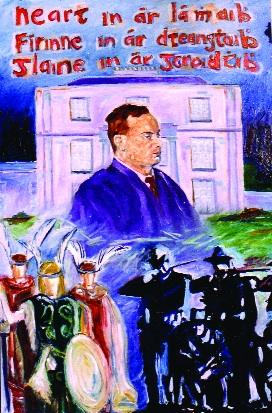
Patrick Pearse—argued that every generation had to take up the torch of revolt. (Caoimhghín Ó Croidheain)
The four Dublin battalions, plus an ad hoc ‘headquarters battalion’, and the Citizen Army—perhaps 1400 men—took up six main positions on Monday. Some of these had been more carefully selected than others. For instance, while the officers of the 3rd battalion, commanded by Eamon de Valera, were given extensive advance briefing on the positions they would occupy (around Boland’s Mills), the 4th battalion seems only to have reconnoitred its targets (around the South Dublin Union) at a very late stage, while the eventual disposition of the 2nd battalion (Jacob’s biscuit factory under Thomas MacDonagh) appears to have come as a surprise to everyone.
Probably the most intriguing puzzle concerns the reasons for occupying the General Post Office (GPO) rather than Dublin Castle. The GPO became, of course, the iconic symbol of the rising, a vast and awesome spectacle as it caught fire at the end of Easter Week. Its position on Dublin’s widest street enhanced its spectacular aspect but reduced its military utility. It was easily cut off from even the nearby posts of the 1st battalion (Four Courts), let alone the four major garrisons south of the Liffey. Over 400—almost a third—of the available republican forces spent the week inside it. This fact casts some doubt on the assertion frequently made that the rebels were not strong enough to occupy the Castle (which, at the start of the rising, was defended by a mere 25 troops). The Castle had, of course, a symbolic value incomparably greater than the GPO: it was the seat of British government and had been the target of Pearse’s great hero, Robert Emmet. And many people (some of them close to Pearse) thought that Pearse hoped to occupy it, even after a mere token force was sent to either capture or neutralise the rambling structure.
The uncertainty about objectives extended across much of the city. As the laborious business of sandbagging and loop-holing the big buildings taken over by the insurgents went on for day after day, few people were really sure what to expect. There was uncertainty too about the purpose of the most visible manifestations of the rising, the barricades—constructed from a bewildering array of vehicles, furniture and even lobby clocks—that were thrown across many central streets. Were they meant to be defended, or merely (as Plunkett apparently said) to provide enough cover to allow insurgents to cross the streets in safety? There was, for many people, a fundamental uncertainty about what the rising could achieve. The majority of Volunteers probably agreed with MacNeill that it was a hopeless enterprise. That does not mean, though, that they had to be tricked into coming ‘out’, as some of Pearse’s critics have alleged. Eyewitness accounts are clear that the men and women of the republican garrisons were quite ready to die for Irish freedom. There was an odd mixture of exhilaration and pessimism—everyone expected that an overwhelming British military counterattack would immediately be mounted.
With the wisdom of hindsight it is clear that the occupation of a few massive buildings was not the most effective military use of the available insurgent forces. The most dramatic successes during the week were to be achieved by very small posts—a mere handful at the epic clash on Northumberland Road and Mount Street Bridge. Rather than immuring hundreds in Jacob’s factory, the Four Courts or the GPO, the republican forces could have imposed heavy costs—both in time and blood—on the British military attempt to regain control of the Irish capital.
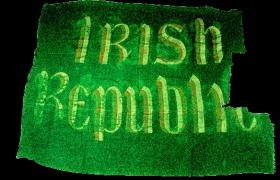
The flag of the Irish Republic that flew over the GPO at Easter 1916. (National Museum of Ireland)
As it was, the army faced little opposition in establishing cordon lines around and then between the insurgent garrisons. The decisive military step, apparently unexpected by James Connolly (who had written and lectured extensively on ‘street fighting’ in the months before the rising), was the use of artillery against the central positions around the GPO.
More effective military resistance would, of course, have meant that even greater destruction was visited on the city. As it was, the uncontrollable conflagration around him, together with the dismaying outburst of looting in the upmarket shopping areas of Henry Street and Sackville Street and the death of civilians in the crossfire, persuaded Pearse to surrender on the morning of Saturday 29 April. For Pearse, the central significance of the fighting was symbolic—it was a gesture. It was important to him that his gesture was more effective than Emmet’s, but by Friday he decided that the republicans had done enough to ‘redeem Dublin from many shames, and make her name splendid among the names of cities’. Connolly’s reading of the situation is less clear—his last general order as commander of the Dublin area said ‘Courage boys, we are winning’—but he too had accepted the inevitability of defeat. Not all his followers agreed: many disputed the surrender order, and some tried to organise breakouts to carry on a guerrilla fight in the countryside. None, however, succeeded.
Like Pearse, Connolly stressed the insurgents’ symbolic achievement: ‘for the first time in two hundred years, the flag of a free Ireland floats triumphantly in Dublin city’. Transcending the week’s military failures was the political point made by the Proclamation of the Irish Republic, and the establishment of a provisional government (however notional). Even the military failures had symbolic significance. The use of artillery may have speeded the suppression of the rising, but it underlined for many just how seriously British power had been threatened by the outbreak. The mere survival of the insurgent garrisons through to the end of the week amazed many Dubliners, who assumed on Monday that it would be all over in 24 hours.
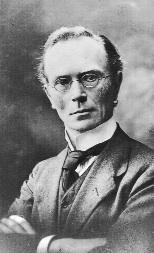
Chief-of-staff Eoin MacNeill
The public reaction was mixed: there was some fierce hostility, rather less direct support, but the great majority reacted with bafflement and amazement. The fighting was the major spectator sport for the week, as curious crowds—astonishingly unscathed for the most part—milled around St Stephen’s Green and O’Connell Bridge to see what was going on (‘Right between the two firing parties’, as one member of the GPO garrison noted).
The government’s response
The ground was laid here for the public reaction to the British response. This confirmed, in a sense, the predictions of both the insurrectionists and the anti-insurrectionists.

Kilmainham, May 1916—contemporary painting, artist unknown. (National Museum of Ireland)
The authorities were surprised by the rising, though they had had ample warning of it. Indeed, as late as Easter Sunday evening the lord lieutenant was urging the arrest of all the Volunteer leaders, but the decision was referred to the chief secretary, who was then in London. In practical terms, the Irish government was totally unprepared. No military garrisons were strengthened: on the contrary, many officers went off to the bank holiday races at Fairyhouse on Monday. The commander-in-chief had already gone off to London for Easter weekend. Only 400 troops were immediately available in Dublin on Monday morning, and, as we have seen, some of the garrisons—at the Castle and Beggar’s Bush barracks, for instance—were extraordinarily weak.
The shock of the revolt seems to have completely disoriented the government. The long-serving minister in charge of Irish policy, Augustine Birrell, resigned immediately, and so did the under-secretary, who had delayed the arrest of the Volunteer leaders. Into this political vacuum the government deliberately inserted the army. The lord lieutenant, Lord Wimborne, declared martial law in Dublin on Monday, but the cabinet in London could have rescinded this once it became clear that the rising had failed to take off in the rest of Ireland. Instead, they not only confirmed the declaration of martial law but extended it across the whole country, and went on to appoint a military governor. Birrell protested that this would be counterproductive, but to no effect. The government knew how complicated Irish nationalist politics were, and should have known how easy it would be to tip opinion away from support for the nationalist parliamentary party, the party of home rule. That party, particularly its joint leader, John Dillon, certainly spelled out in unambiguous terms the danger of driving moderates into the arms of extremists in the aftermath of the rising, but he was ignored. Reacting to the rising as a ‘stab in the back’, British opinion was simply uninterested in distinguishing between moderate nationalists and republican separatists.
The new military governor, General Maxwell, had little choice but to try and execute the principal leaders of the rising—the seven signatories of the Proclamation.
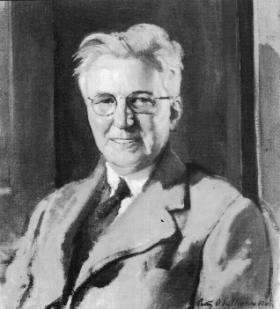
Bulmer Hobson strongly argued that the Volunteers should wait.
The government seems to have thought that anything less would outrage British public opinion. Nor was the government at this stage at all concerned about the quality of evidence presented to the courts martial; sadly for all concerned, it was far from reliable. As a result, several men were executed who were in no sense rebel leaders and were certainly not guilty of killing anyone—Pearse’s younger brother Willie, for instance, and the Sinn Féiner Michael O’Hanrahan. As the process of trial and execution extended over ten days, there was a visible revulsion of Irish public opinion. The military authorities went on to aggravate this by launching a countrywide round-up of anyone suspected by the police of involvement in the rebel plans. Over 3000 people were arrested but, as the prime minister himself quickly realised, most of them were far from dangerous—yet, at any rate. Well over half were quickly released. The rest were deported to internment in English prisons, alongside those surrendered rebels who had not been court-martialled. Once again, however, the government woke up to the paucity of evidence against most of the deportees, and began another process of combing out the ‘innocents’.
The turning point?
The summer and autumn of 1916 saw the beginning of a far-reaching transformation of nationalist attitudes in Ireland. Many who had accepted the argument that home rule was the limit of what was practically attainable now began to think that separatism was not an entirely wild dream. Even Anglo-Irish people who had instinctively derided the more fanatical Irish-Irelanders—like the poet W.B. Yeats’s sister, Lily—experienced an angry sense of alienation from British methods. (‘We can never understand each other,’ she fumed.) The process was accelerated at the end of the year by the release of the internees, and again by the release of the remaining prisoners in June 1917. The experience of imprisonment had turned the majority of them into a more committed and disciplined revolutionary cadre, which immediately pitched into political activism under the banner of the revived Sinn Féin party. Little more than a year after the first national convention held by Sinn Féin and the Volunteers in October 1917, the party swept aside the home rulers in the 1918 general election.
Was the 1916 rising the catalyst of this change? Or, as its critics have argued then and since, was it not the ‘conscription crisis’ of spring 1918 that tipped the balance against the old parliamentary party? There can be no doubt that Sinn Féin’s ability to exploit this crisis was a vital stage in its emergence as the dominant voice of Irish nationalism. And it is clear too that the conscription threat would have been a potent generator of support for Sinn Féin, with or without the rising. Opposition to recruitment was one of the issues on which all separatists could unite, and its impact in undermining the legitimacy of the British state was profound. 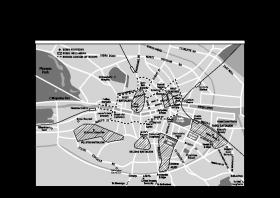 But it seems unlikely that the Sinn Féin organisation which so naturally took control of the anti-conscription movement (deftly engaging in the process the support of the parliamentarians’ key ally, the Catholic church) would have existed in that form without the experience of 1916. It was former insurgents who became the candidates and the constituency activists for the Sinn Féin political upsurge in 1917, and their status as ‘rebels’ was foremost amongst their political credentials.
But it seems unlikely that the Sinn Féin organisation which so naturally took control of the anti-conscription movement (deftly engaging in the process the support of the parliamentarians’ key ally, the Catholic church) would have existed in that form without the experience of 1916. It was former insurgents who became the candidates and the constituency activists for the Sinn Féin political upsurge in 1917, and their status as ‘rebels’ was foremost amongst their political credentials.
It has often been suggested that the widespread description of 1916 as the ‘Sinn Féin rebellion’ was a misnomer based on ignorance or malevolence. On this view (expressed currently on the UCD Archives website, as well as in the classic work of F. S. L. Lyons, Ireland since the Famine), the Sinn Féin party of 1917 was the fortuitous beneficiary of a rising that had nothing to do with it. Yet while it is true that it was the police who coined the term ‘Sinn Féin Volunteers’ to describe the minority who broke away from Redmond over the issue of his support for the war in 1914, it does not follow that the Volunteers did not accept the label ‘Sinn Féiners’. This was, indeed, such common currency in 1915—amongst the general public as much as the authorities—that the labelling of 1916 as the ‘Sinn Féin rebellion’ was inevitable. Contemporaries did not see Sinn Féin as a particular grouping whose policy was defined by Arthur Griffith but as a general attitude of mind: an attitude that embodied the rejection of ‘everything English’, and one that was in essence separatist. Eoin MacNeill, the most prominent opponent of insurrection, argued in 1915 that, though Daniel O’Connell ‘was what is now called a Sinn Féiner’, he would have accepted that, ‘if the principles of Sinn Féin should be found to be of no avail, the only right alternative was to be a separatist’. 1916 elided that fine line, as it paradoxically elided the once-clear line between ‘moral’ and ‘physical’ force.
Charles Townshend is Professor of Modern History at Keele University.
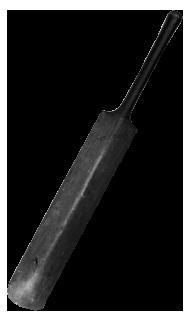
Cricket bat recovered from Elvery’s, Sackville Street, after the Rising. Note the bullet lodged in the bottom. (National Museum of Ireland)
Further reading:
M. Caulfield, The Easter Rebellion (London, 1963; Dublin, 1995).
M. Foy and B. Barton, The Easter Rising (Stroud, 1999).
K. Jeffery, Ireland and the Great War (Cambridge, 2000).
C. Townshend, Easter 1916 (London, 2005).
















